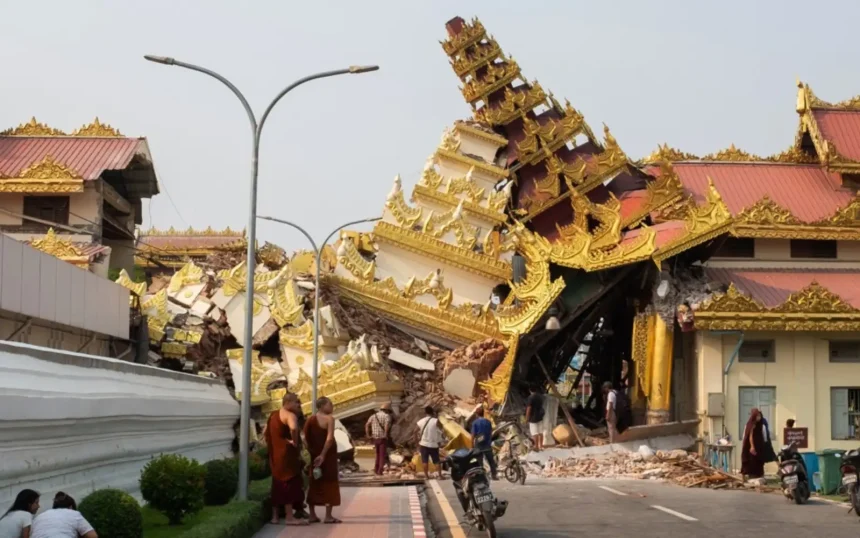A devastating 7.7-magnitude earthquake struck central Myanmar on March 28, 2025, resulting in a death toll exceeding 2,000 and leaving thousands injured. The disaster has severely strained the nation’s already fragile healthcare infrastructure, complicating rescue and relief efforts.
Rising Casualties and Widespread Destruction
The earthquake’s epicenter was near Mandalay, Myanmar’s second-largest city, which experienced significant destruction. The ruling military junta reported over 2,000 fatalities, with more than 3,900 individuals injured and approximately 270 still missing. The collapse of numerous buildings, including homes, religious sites, and schools, has left many communities in ruins.
Healthcare System Under Siege
The World Health Organization (WHO) has highlighted the immense pressure on Myanmar’s healthcare facilities, many of which are struggling to manage the influx of injured individuals. At least three hospitals have been destroyed, and 22 others partially damaged. There is an urgent need for trauma and surgical care, blood transfusion supplies, essential medicines, and mental health support.
Challenges in Rescue and Relief Operations
Efforts to locate survivors and provide aid are hampered by damaged infrastructure, including roads and bridges, as well as unstable communication networks. The ongoing civil conflict further complicates access to affected areas, leaving many communities isolated and in dire need of assistance.
International Aid and Support
In response to the crisis, neighboring countries such as India, China, and Thailand have dispatched relief materials and rescue teams. However, residents in severely affected regions report that international aid has yet to reach them, and there is a critical shortage of food, electricity, and water.
Urgent Appeals for Assistance
The United Nations and various humanitarian organizations have called for unimpeded access to deliver aid and medical care. The WHO has issued an $8 million emergency appeal to support the immediate health needs of the affected population. The full extent of the devastation is still unfolding, and the death toll may rise as more information becomes available.
Conclusion
The earthquake has compounded Myanmar’s existing humanitarian challenges, exacerbating the suffering of communities already impacted by conflict and displacement. Immediate and coordinated international support is crucial to address the urgent needs of survivors and to assist in the country’s recovery efforts.










